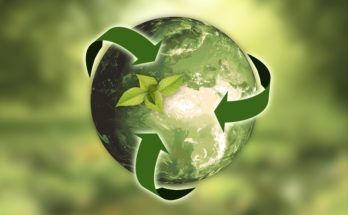The English word Communication which originally came from latin word communicare means to share or to make common. It is the process of conveying and exchanging the message, information, assertions and attitudes. The media plays a very important role to disseminate the message, the content of the communication.
The common media of mass communication including newspaper, radio, television and online have a vital role to expose the different issues to a global discourse. Climate change is a global issue and relatively a new challenge of Nepal. The issues of climate change in Nepal have been drawing attention of national and international media as well.
Climate change can be defined as the state of climate that can be identified statically and that persist for an extended period, typically decades or longer which is a major environmental and social challenge for the developing country like Nepal. Extreme hot or cold days, changed patterns in rain fall, droughts are some of the seasonal variability due to the Climate change.
Water stress, forest and biodiversity loss, reduced agricultural productivity, increased epidemic diseases are some of the impacts of climate change.
Climate change is emerging as a major threat to Nepali people and their livelihood. More than 1.9 million people are highly climate vulnerable and 10 million are increasingly at risk. So, the poorest communities in the poorest countries and regions of the world are hardest hit by its impact with little resource in place to deal with extreme environmental issues.
However, only a handful of media are raising the issues. Even the number of the media persons who have their insight into the issue is not satisfactory. They still need orientation to deal with this issue and its relation to socio-economic condition in Nepali context Media is important to draw the public attention on varieties of issues. It is not only crucial to convey or exchange information about politics, economy, history e.t.c but also the devastation and vulnerability caused by climate change and natural calamities.
Till 2005, climate change was not the matter of much interest to the media. After 2007 report of IPCC(Intergovernmental Panel for Climate Change) which admitted the glaciers melt by 2035, the issues of South Asia came on the front globally. Currently, media focuses on big stories, including destruction caused by floods and droughts, have drawn public attention and generated necessary debates on the impact of environmental degradation, but still it is not adequate.
The information shared and disseminated is not enough. Firstly, geographically remote parts of the country, mainly the rural community depends only on radio to access the information. Secondly, shared information often lacks scientific explanation of the change specific weather pattern, and do not provide the strategies to cope with climate change. Thirdly, with low literacy rate and due to the language used-English and unavailability and skills to access technologies like internet is also creating hurdles to disseminate climate changes issues.
Most of the people living in rural areas have to rely on media for information. Therefore, it is the media which should act as the bridge between/among the scientists, policy makers and vulnerable communities to raise awareness to fill the information gap. It is well understood that climate change is an issue which requires diverse efforts.
In multi aspects of the development sectors to mitigate, adapt and resile. Media have role to exchange experience, disseminate information and aware people. To minimize the risk and vulnerability, media can be one of the most important tool to help cope with climate change impacts.
This Article is Written by “Arati Rana” A Sub-regional Youth Advisor for Asia Pacific(UNEP-TUNZA) and Guest Author At “Envirocivil.com”



